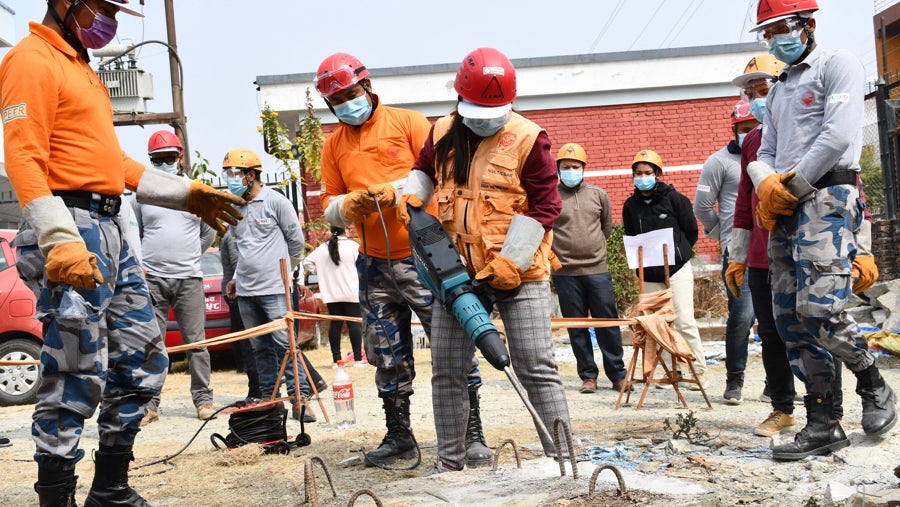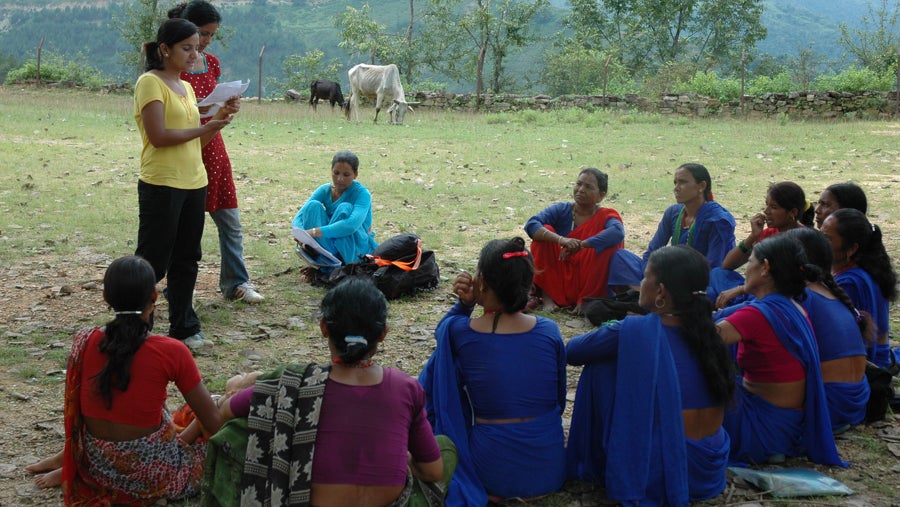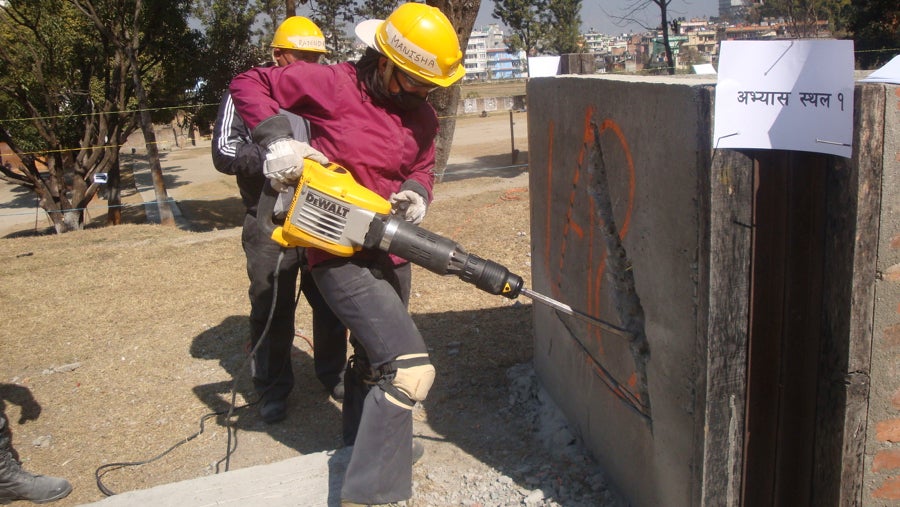Manisha Pantha is a Nurse and Training Course Material Specialist in Disaster Preparedness and Emergency Response (DPER) division at National Society for Earthquake Technology Nepal (NSET). She works for the Program for Enhancement of Emergency Response in Nepal at NSET. Manisha is a humanitarian first-responder on a mission to get more women involved in disaster risk management planning so communities can better cope with the impacts of disasters and climate change.

Manisha’s nursing career began with a tragedy. After just six months of nursing practice, there was a deadly accident in a nearby village where she was stationed in rural Nepal.
“A jeep rolled down the mountain and all the 30 people were brought to the hospital,” Manisha recalls. “It was a very basic facility with 30 casualties coming in. The hospital was in chaos because there were no resources ready kept in reserve for a disaster situation.”
“There was no planning,” she says. “They did not know what they would do when there were so many patients at the same time.”
After that event, the medical team had a meeting in the hospital. They raised the issue of disaster risk management and hospital preparedness, and for Manisha it was a turning point. “I started realizing I would not be reaching lots of people by just doing nursing,” she says. “I entered the field of disaster management where I can do public health.”
Manisha helps hospitals in managing disaster preparedness and response plans. “I realized that prehospital treatment is equally important as a hospital preparedness program.”
She is one of the developers for a curriculum of Basic Emergency Medical Response (BEMR, Community Search and Rescue (CSAR) and Damage Assessment Trainings (DAT). Because Nepal ranks 6th in the world in climate-related disasters, she could see that the need for better responses in emergencies was essential.
“Every year we have so many disasters caused by landslides, floods, earthquakes and fires,” Manisha says. “There are more challenges added every year because of climate change.”

The intensity of the monsoon is increasing and Nepal now gets more floods and bigger, more deadly floods. Nepal is also experiencing more extreme heat waves causing a surge in fires. “Because of increasing heat during the summer season we have lots of fires and the intensity of the fires has increased,” she says.
One of the major challenges of the changing climate is the unpredictability of where the disasters might hit. “Every year there is a change in the pattern of the monsoon,” she says. “This has a direct impact on the pattern of landslides.”
With floods and landslides at the top of the list of climate impacts, Manisha says it’s important to train more people at different levels on how to respond and save lives when disasters hit. “We have to go to the communities,” she says. “The community are the real first-responders. The idea is to develop community responders, especially women, because women already are first-responders in the community for their children and family.”
Manisha says the vision is to reach women and develop their capacity to be involved in disaster response activities. She says she is able to build trust with other women in rural communities throughout Nepal and encourage them to learn the life-saving techniques. She says it’s an important element in getting women to overcome cultural norms and beliefs that too often hold women back.
“The women trust me as a fellow woman to explain how important the search and rescue process is,” she says. “I am the instructor for search and rescue operations and when I'm lifting a heavy load or when I show them how to extinguish a fire, they can see that it is possible.”
Manisha trains women and other professional responders from security forces in a wide range of skills from rescue to resuscitation. She even teaches women how to cut through different surface walls including concrete walls and rubble to save lives.
“I show women how to cut a concrete wall,” she says. “After they see that, they are more confident and they are willing to learn.”

The goal is to empower women and others to be able to take immediate action when disasters hit. Beyond increasing the overall numbers of trained responders, Manisha says women bring new perspectives and ideas.
“Women bring unique skills to any emergency response,” she says. “They know how to connect with victims and keep them calm. When someone is injured or trapped by debris, it makes a big difference when the rescue worker has emotional skills that can reassure the person in distress.”
In addition to techniques to get people out of debris, Manisha says climate change has made flood rescue skills more important than ever so people can be pulled from raging rivers.
“Swift water rescue is different from what we do in stagnant or deep and deep dive water rescue,” she says. “We need many people on the ground who can save lives without putting themselves at risk. Training is critical and with the climate crisis increasing monsoon floods, we need more first and professional responders with equipment to save people from floods.”
Along with swift water rescue training, Manisha and her team teach communities how to prepare for and respond to landslides, fires and other emergencies. She says they have shifted focus towards multi-hazard and ‘complex emergencies’ because disasters can sometimes hit all at once.
“During COVID-19 we had two other emergencies,” she says. “It was a complex emergency. There was a lot of confusion about what to do and what not to do.”

In the midst of a pandemic, one part of Nepal experienced extreme floods that they were not well-prepared for because they were not accustomed to this amount of rainfall in this region.
“Debris flows swept away one whole town,” she says. “This was completely unexpected. That area did not have a flood for a long time but all of a sudden the water was so high.”
Since 2015 Manisha has trained more than 2,000 women in Nepal for preparedness, risk reduction and response (PR3) to disasters in emergency rescue techniques. While she is heartened by progress in expanding the network of women involved in disaster planning, she feels there is still more to be done to strengthen systems to save lives from future disasters and climate change.
“I am inspired by the many women I have trained,” Manisha says. “They are out in their communities sharing what they have learned and that means far fewer people will die in the next disaster.”
Manisha says training needs to be expanded and continue beyond just basic rescue techniques. “In a disaster, every second counts,” she says. “We have to equip communities with the skills to save lives because Nepal is at high risk of multiple hazards and climate change only makes it worse.”
Learn more about National Society for Earthquake Technology-Nepal (NSET) here.

